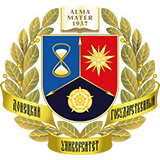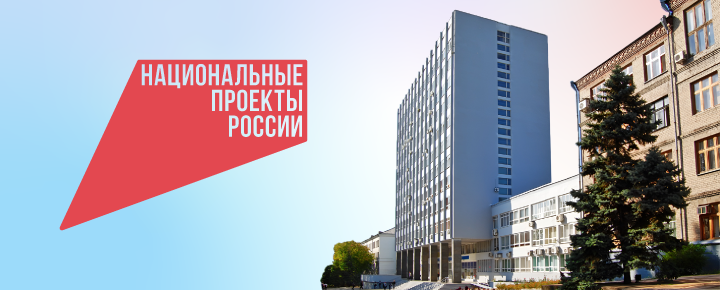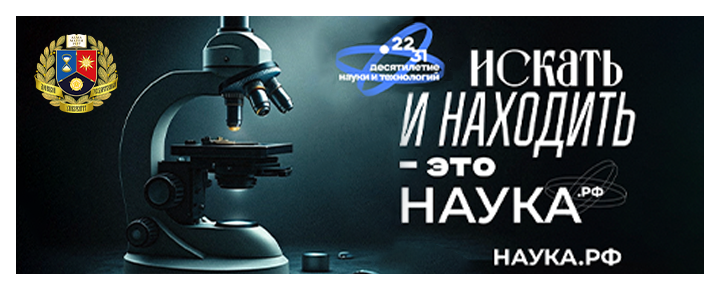ORDER
of referral, reviewing and publication of articles in the journal
"New in Economic Cybernetics"
- The editorial board of the journal "New in Economic Cybernetics" accepts for consideration scientific articles and reviews on the subject of the journal.
- Articles are accepted for consideration in strict compliance with the requirements to the original author's articles and the presence of all accompanying documents. The responsible or technical secretary notifies the authors about the receipt of the article by e-mail, about the receipt of the originals of all necessary documents and sends the articles for review.
- The received articles are initially checked for uniqueness and compliance with the requirements for the structure of the article and design. Requirements for originality of the text of scientific articles – 75% (review and theoretical articles), 85% – analytical and experimental articles.
- In the case of the original text of the article, designed in compliance with all the requirements of the journal, the article is sent for internal review.
- Reviewing is carried out by members of the editorial board in accordance with the scientific areas in which they specialize. All reviewers approved by the editorial board are recognized specialists and have publications on the subject of the reviewed scientific material within the last five years.
- In the temporary absence of members of the editorial board, supervising the scientific direction on the subject of the received article, or receipt of the article from a member of the editorial board, external reviewers can be involved in the review procedure. In this case, the external reviewer should be a recognized expert on the subject of the reviewed material and have publications on the subject of the reviewed article within the last five years.
- Involvement of external reviewers is possible in the following cases: when there is no member of the editorial board supervising a certain scientific direction; a member of the editorial board has no opportunity to prepare a review; the editorial board does not agree with the opinion expressed in the review of a member of the editorial board; an article is received from a member of the editorial board. At the next meeting of the editorial board a decision is made to request a review from a scientist who has scientific works on the problems stated in the article. On behalf of the editorial board a letter with a request for review is sent to such a scientist. The letter is accompanied by the article and the recommended form of review.
- All reviews meet the criteria generally accepted in the scientific environment and are formalized in the order established by the editorial board. Articles are evaluated by reviewers based on a 5-point scale on the criteria of scientific novelty, scientific validity of the results, significance of the results, logic and clarity of presentation, quality of design. In the review, the reviewer also provides a detailed explanation of each criterion of the parametric evaluation of the article and calculates the total score (maximum 25 points). If the total sum of points for the article is below 15 or the value of one of the parameters is below 3 points, the article is recognized as not meeting the minimum criteria and is sent to the authors for radical revision of the material or rejected.
- The reviewer can recommend the article for publication; recommend it for publication after revision taking into account the comments; not recommend the article for publication. If the reviewer recommends the article for publication after revision taking into account the comments or does not recommend the article for publication - the review should indicate the reasons for such a decision.
- The presence of a significant proportion of critical comments of the reviewer with an overall positive recommendation allows to classify the material as polemical and print it in the order of scientific discussion.
- The reviewer should consider the sent article within a month from the date of receipt and send to the editorial office the text of the review or a motivated refusal to accept the article for publication in the journal.
- The final decision on publication, publication after revision or rejection of the article is made by the editorial board. Based on the decision, a letter is sent to the authors. The letter gives a general assessment of the article, if the article can be published after revision (taking into account the comments) – recommendations for revision (elimination of comments) are given, if the article is not accepted for publication – the reasons for such a decision are given.
- If there are sufficient grounds, articles may be sent for additional reviewing.
- If the review is positive, but contains comments and suggestions, the editorial board sends the article to the authors for revision together with the reviewer's comments. The article sent to the authors for revision should be returned in corrected form as soon as possible. The revised manuscript should be accompanied by a letter from the authors containing answers to all comments and explaining all changes made in the article. An article delayed for more than three months or requiring revision is considered as a newly submitted article.
- The Editorial Board sends the authors of the submitted materials copies of reviews or a motivated rejection. The Editorial Board does not enter into a discussion with the authors of rejected articles, except for cases defined as an obvious misunderstanding.
- The Editorial Board reserves the right to make minor technical corrections to the text of the article without violating its meaning and content.
- Reviews are kept in the editorial office of the journal for five years. At the request of the Ministry of Science and Higher Education of the Russian Federation, the Editorial Board of the Journal sends copies of reviews of published articles to the Ministry.












